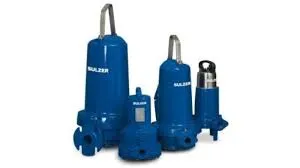Sinhala
- Afrikaans
- Albanian
- Amharic
- Arabic
- Armenian
- Azerbaijani
- Basque
- Belarusian
- Bengali
- Bosnian
- Bulgarian
- Catalan
- Cebuano
- Corsican
- Croatian
- Czech
- Danish
- Dutch
- English
- Esperanto
- Estonian
- Finnish
- French
- Frisian
- Galician
- Georgian
- German
- Greek
- Gujarati
- Haitian Creole
- hausa
- hawaiian
- Hebrew
- Hindi
- Miao
- Hungarian
- Icelandic
- igbo
- Indonesian
- irish
- Italian
- Japanese
- Javanese
- Kannada
- kazakh
- Khmer
- Rwandese
- Korean
- Kurdish
- Kyrgyz
- Lao
- Latin
- Latvian
- Lithuanian
- Luxembourgish
- Macedonian
- Malgashi
- Malay
- Malayalam
- Maltese
- Maori
- Marathi
- Mongolian
- Myanmar
- Nepali
- Norwegian
- Norwegian
- Occitan
- Pashto
- Persian
- Polish
- Portuguese
- Punjabi
- Romanian
- Russian
- Samoan
- Scottish Gaelic
- Serbian
- Sesotho
- Shona
- Sindhi
- Sinhala
- Slovak
- Slovenian
- Somali
- Spanish
- Sundanese
- Swahili
- Swedish
- Tagalog
- Tajik
- Tamil
- Tatar
- Telugu
- Thai
- Turkish
- Turkmen
- Ukrainian
- Urdu
- Uighur
- Uzbek
- Vietnamese
- Welsh
- Bantu
- Yiddish
- Yoruba
- Zulu
Telephone: +86 13120555503
Email: frank@cypump.com
දෙසැ. . 17, 2024 13:17 Back to list
sewage ejector pumps
Understanding Sewage Ejector Pumps A Comprehensive Guide
Sewage ejector pumps play a crucial role in the management of wastewater for residential and commercial facilities alike. When plumbing fixtures are located below the municipal sewer line, a sewage ejector pump becomes essential for effectively moving wastewater to the appropriate disposal or treatment points. This article delves into the workings, types, and benefits of sewage ejector pumps, providing a thorough understanding of this important system.
What are Sewage Ejector Pumps?
Sewage ejector pumps are submersible pumps designed to lift and transport sewage from lower levels to a higher elevation where it can flow into the main sewer system. These pumps are often used in basements, below-ground bathrooms, and areas where gravity cannot facilitate the natural flow of wastewater. The sewage ejector pump collects waste, water, and solids into a basins or tank and then, upon reaching a specific level, activates to pump the contents upwards through a discharge pipe.
How Do Sewage Ejector Pumps Work?
The operation of a sewage ejector pump begins with a float switch. When wastewater fills the tank and reaches a predetermined level, the float rises, triggering the pump’s motor. The pump then activates, drawing the contents into a cutting mechanism. This mechanism grinds solid waste into smaller pieces to ensure a smooth passage through the discharge pipe. The pump forces the liquefied waste upward, overcoming gravity and allowing it to flow into the sewer line.
Most sewage ejector pumps are designed for rugged performance, equipped to handle various solids and debris commonly found in wastewater. These pumps typically have a capacity measured in horsepower, indicating their power and efficiency in moving waste.
Types of Sewage Ejector Pumps
Sewage ejector pumps come in several styles, each suited to different types of applications
1. Submersible Ejector Pumps These are designed to operate while submerged in the sewage tank. They are quieter, can handle larger volumes, and are often more efficient than other models.
2. Pedestal Ejector Pumps Positioned above the sewage tank, these pumps are easier to service and replace. However, their exposed position can make them noisier and less efficient when handling large volumes of wastewater.
sewage ejector pumps

Benefits of Sewage Ejector Pumps
Sewage ejector pumps offer numerous advantages for homeowners and businesses. Some of the key benefits include
- Prevention of Backflow By allowing wastewater to be pumped to higher ground, sewage ejector pumps help prevent backflow issues that can lead to serious plumbing problems and contamination.
- Increased Property Value Installing a sewage ejector pump system can enhance the usability of a property by enabling the addition of bathrooms or laundry facilities in previously unusable areas, therefore increasing its market value.
- Improved Hygiene and Sanitation By efficiently disposing of waste, sewage ejector pumps contribute to improved hygiene and sanitation within residential and commercial spaces, reducing the risk of odors and health hazards.
- Versatility These pumps can be utilized in various settings, such as homes, commercial buildings, and even in septic systems, showcasing their versatility and essential role in modern plumbing solutions.
Maintenance and Considerations
While sewage ejector pumps are robust, regular maintenance is critical to ensure their longevity and efficiency. Homeowners should periodically check for blockages, ensure the float switch is functioning, and inspect the pump for any signs of wear or damage. It is advisable to consult with a professional plumber for routine inspections and service, particularly for more complex systems.
Conclusion
Sewage ejector pumps are indispensable in any plumbing system that requires the movement of wastewater from lower levels to the sewer line. Whether it’s for a new bathroom installation in a basement or maintaining an existing system, understanding how these pumps work, their types, and their benefits can empower homeowners to make informed choices for their properties. With proper maintenance and care, a sewage ejector pump can deliver years of reliable service, aiding in efficient wastewater management and contributing to overall home sanitation.
-
High-Performance Air Pumps for Sand & Gravel | Efficient Transport
NewsAug.03,2025
-
ISG Series Vertical Pipeline Pump - Chi Yuan Pumps Co., LTD.|Energy Efficiency, Corrosion Resistance
NewsAug.03,2025
-
ISG Series Pipeline Pump - Chi Yuan Pumps | Energy Efficiency&Compact Design
NewsAug.03,2025
-
ISG Series Vertical Pipeline Pump - Chi Yuan Pumps Co., LTD.|High Efficiency, Low Noise, Durable
NewsAug.02,2025
-
ISG Series Vertical Pipeline Pump - Chi Yuan Pumps | High Efficiency, Low Noise
NewsAug.02,2025
-
ISG Series Vertical Pipeline Pump- Chi Yuan Pumps Co., LTD.|High Efficiency&Compact Design
NewsAug.02,2025










